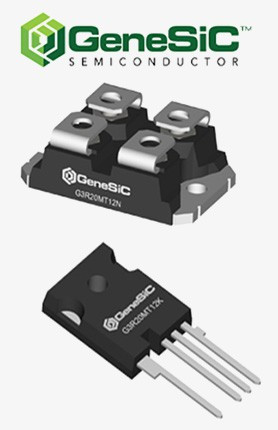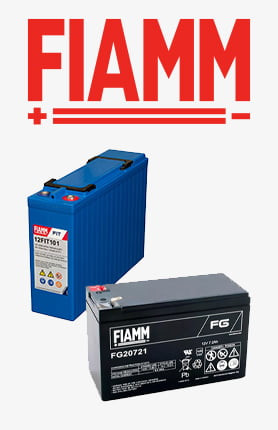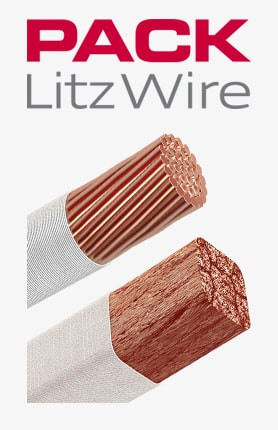trebuie să fii logat
-
întoarce-teX
-
Componente
-
-
Category
-
Semiconductoare
- Diode
- tiristoare
- Module izolate electric
- Redresoare în punte
-
Tranzistoare
- tranzistoare GeneSiC
- Module MOSFET Mitsubishi SiC
- Module MOSFET STARPOWER SiC
- Module MOSFET ABB SiC
- Module IGBT de la MITSUBISHI
- Module de tranzistori MITSUBISHI
- module MITSUBISHI MOSFET
- Module de tranzistori ABB
- Module IGBT de la POWEREX
- Module IGBT - de la INFINEON (EUPEC)
- Elemente semiconductoare din carbură de siliciu
- Accesați subcategoria
- Șoferii
- Blocuri de putere
- Accesați subcategoria
- Traductoare de curent și tensiune LEM
-
Componente pasive (condensatori, rezistențe, siguranțe, filtre)
- Rezistoare
-
Siguranțe
- Siguranțe miniaturale pentru sisteme electronice din seria ABC și AGC
- Siguranțe tubulare cu acțiune rapidă
- Inserții întârziate cu caracteristici GL/GG și AM
- Legături sigure ultra-rapide
- Siguranțe standard britanice și americane cu acțiune rapidă
- Siguranțe cu acțiune rapidă standard european
- Siguranțe de tracțiune
- Siguranțe de înaltă tensiune
- Accesați subcategoria
-
Condensatoare
- Condensatoare pentru motoare
- Condensatoare electrolitice
- Condensatori Icel Film
- Condensatoare de putere
- Condensatoare pentru circuite DC
- Condensatoare de compensare a puterii
- Condensatoare de înaltă tensiune
- Condensatoare pentru încălzire prin inducție
- Condensatoare de impulsuri
- Condensatoare DC LINK
- Condensatoare pentru circuite AC/DC
- Accesați subcategoria
- Filtre anti-interferențe
- Supercondensatoare
- Protecție la supratensiune
- Filtre de emisii revelatoare TEMPEST
- Accesați subcategoria
-
Relee și Contactoare
- Teoria releelor și contactoarelor
- Relee cu stare solidă trifazată CA
- Relee cu stare solidă DC
- Regulatoare, sisteme de control și accesorii
- Porniri ușoare și contactoare inversoare
- Relee electromecanice
- Contactoare
- Comutatoare rotative
-
Relee cu stare solidă CA monofazate
- Relee cu stare solidă CA monofazate Seria 1 | D2425 | D2450
- Relee semifazate CA monofazate, seria CWA și CWD
- Relee semifazate CA monofazate seriile CMRA și CMRD
- Relee cu stare solidă CA monofazate Seria PS
- Relee cu stare solidă AC seria duble și cvadruple D24 D, TD24 Q, H12D48 D
- Relee monofazate din seria GN
- Relee cu stare solidă CA monofazate Seria CKR
- Relee monofazate pentru șină DIN AC SERIA ERDA și ERAA
- Relee AC monofazate pentru curent de 150A
- Relee duble cu stare solidă integrate cu radiator pe șină DIN
- Accesați subcategoria
- Relee cu stare solidă imprimabile monofazate CA
- Relee de interfață
- Accesați subcategoria
- Miezuri și alte componente inductive
- Radiatoare, Varistoare, Protectie termica
- Fani
- Aer conditionat, Accesorii tablou, Racitoare
-
Baterii, încărcătoare, surse de alimentare tampon și convertoare
- Baterii, încărcătoare - descriere teoretică
- Baterii litiu-ion. Baterii personalizate. Sistem de management al bateriei (BMS)
- baterii
- Incarcatoare de baterii si accesorii
- UPS și surse de alimentare tampon
- Convertoare si accesorii pentru fotovoltaice
- Stocarea energiei
- Pile de combustibil cu hidrogen
- Celule litiu-ion
- Accesați subcategoria
-
Automatizare
- Elevatoare Spiralift
- Piese pentru drone Futaba
- Întrerupătoare de limită, Micro întrerupătoare
- Senzori, traductoare
- Pirometre
- Contoare, relee de timp, contoare de panou
- Echipament industrial de protectie
- Semnale luminoase și sonore
- Cameră termică
- Afișaje LED
- Butoane și întrerupătoare
- Accesați subcategoria
-
Cabluri, fire Litz, Conduite, Conexiuni flexibile
- Firele
- Presetupe și manșoane
- Chipurile
-
Cabluri pentru aplicatii speciale
- Cabluri de prelungire și compensare
- Cabluri de termocuplu
- Cabluri de conectare pentru senzori PT
- Cabluri cu mai multe fire de temperatură. -60°C până la +1400°C
- Cabluri de medie tensiune SILICOUL
- Cabluri de aprindere
- Cabluri de incalzire
- Cabluri cu un singur conductor temp. -60°C până la +450°C
- Fire de cale ferată
- Cabluri de încălzire în ex
- Cabluri pentru industria de apărare
- Accesați subcategoria
- tricouri
-
Impletituri
- Impletituri plate
- Impletituri rotunde
- Impletituri foarte flexibile - plate
- Impletituri foarte flexibile - rotunde
- Impletituri cilindrice de cupru
- Impletituri si capace cilindrice din cupru
- Curele flexibile de împământare
- Impletituri cilindrice din otel zincat si inoxidabil
- Impletituri de cupru izolate PVC - temperatura de pana la 85 de grade C
- Impletituri plate din aluminiu
- Kit de conectare - impletituri si tuburi
- Accesați subcategoria
- Echipament de tracțiune
- Capse de cablu
- Sine flexibile izolate
- Sine flexibile multistrat
- Sisteme de management al cablurilor
- Accesați subcategoria
- Vezi toate categoriile
-
Semiconductoare
-
-
- Furnizori
-
Aplicații
- Automatizare HVAC
- Automatizare industrială
- Băncile de energie
- Cercetare si masuratori de laborator
- Componente pentru zonele cu pericol de explozie (EX)
- Echipament industrial de protectie
- Echipamente pentru dulapuri de distributie si control
- Exploatare minieră, metalurgie și turnătorie
- Imprimare
- Încălzire prin inducție
- Inginerie energetică
- Mașini CNC
- Masini de sudura si sudori
- Mașini de uscare și prelucrare a lemnului
- Masini pentru termoformarea materialelor plastice
- Măsurarea și reglarea temperaturii
- Motoare si transformatoare
- Surse de alimentare (UPS) și sisteme redresoare
- Tracțiune cu tramvai și feroviar
- Unități DC și AC (invertoare)
-
Instalare
-
-
Inductori
-
-
Dispozitive de inducție
-
-
Serviciu
-
- Kontakt
- Zobacz wszystkie kategorie
The Next Generation of High Power IGBT Module

The Next Generation of High Power IGBT Modules
LV100 dla przekształtników wiatrowych, falowników fotowoltaicznych i napędów silników
High power applications in the fields such as renewable energy and industrial drives require reliable and scalable power modules with high power density and low stray inductances. In order to fulfill these requirements, the concept of the well-known and successful HVIGBT LV100 package has been transferred and adapted to the needs of renewable and industrial applications.
By Thomas Radke and Narender Lakshmanan, Mitsubishi Electric Europe B.V
LV100 Concept
Applications like wind energy converters, central photovoltaic inverters and industrial drives require power modules with the highest power density, high reliability, and scalable power ranges with a standardized outline in the voltage classes of 1200V and 1700V. To fulfill such requirements, the LV100 power module is based on same outline and internal layout concept as the well-known HVIGBT LV100 module. This concept is convincing because it is based on a standardized package outline while also capable of delivering the highest power density, scalability by easy paralleling, low stray inductance, capability to operate with fast switching devices like SiC MOSFETs and having excellent current sharing balance. In combination with the latest 7th generation IGBT and Diode efficient chips and the thermal cycle failure free SLC-package-technology, the LV100 module provide the best overall performance. In the 1700V, a current rating of 1200A has been realized which represents an outstanding current density considering the compact package footprint of only 144x100mm2.

Figure 1: New LV100 Power Module for industrial application
LV100 Internal Layout
In high power IGBT modules, multiple chips are connected in a parallel configuration because IGBT chips sizes are limited and usually the rating maximum current is in a range of ~200A for IGBT chips with blocking voltages of 1200V or 1700V. Therefore, for the realization of an IGBT module with a current rating of 1200A or more, paralleling of at least six or more IGBT chips is required. While designing the layout, the current balancing between the chips connected in parallel has to be considered. Equally shared chip currents are required for achieving homogeneous loss and heat distribution. A non-homogeneous current distribution causes a certain chip to carry the highest current and this chip will experience the highest temperature which ultimately limits the performance and life-time of the total system. The parasitic impedances of the connection to the individual chips significantly influence the current sharing between the chips operated in parallel. In case the parasitic inductances are not equally designed for all chips, a dynamic current imbalance during IGBT switching will occur. The module terminal arrangements and the chip positions are the major influencing factors for the parasitic impedances. To realize an equal impedance, the distances from the power terminals to all the chips have to be ideally the same. This can be achieved by optimizing the terminal and chip arrangement so that it is perpendicular to

Figure 2: LV100 product line-up plan
the current flow as shown in figure 3 [6]. In the ideal module concept, the commutation (indicated by the blue and red arrows) is only in Y-direction whereas the terminals and chips are orientated perpendicular in x-direction.
By this approach, equal parasitic impedances are achievable. This ideal concept was considered in the development of the LV100 layout and a homogenous current sharing, as shown in the simulation result in figure 4 was realized. The conventional modules available today in the field of high power industrial drives or converters for renewable energy usually have a terminal arrangement which is parallel to the chip arrangement and current flow. As a result of this conventional design, equal parasitic impedances was not be realizable and the resulting imbalance in the current sharing was an accepted feature of the conventional modules. For events such as load short circuits, due to the absence of the inductive coupling in the laminated busbars, the impact of the unequal stray inductances between different chips becomes significant for such conventional modules.
In case of fast switching semiconductor devices with high di/dt, the differences in parasitic stray inductances between the chips will influence the current sharing enormously. Therefore, if an inverter designer considers changing to SiC devices in future, the LV100 package is the right choice since the layout concept is ready for SiC [8]. As result, a potential future change from Si-IGBT to SiC-MOSFET [9] devices is feasible with less changes and redesign efforts.

Figure 3: Comparison of power module layout concepts

Figure 4: Simulation result of current sharing at turn-on event in LV100 package concept.
Thermal cycle failure free package
IGBT modules in high power industrial drive applications experience thermal cycling [1] in case of fluctuating (or non-continuous) loads. Wind power converters are usually liquid-cooled with the cooler having a thermal time constant of a couple of seconds. As a result, the IGBT case temperature will respond rapidly to a temperature swing by changing of load conditions. That means on days with fluctuating wind conditions the IGBT module baseplate will experience many thermal cycles. Also photovoltaic inverters experience at minimum one huge thermal cycle per day. Considering an inverter life-time of 25 years, the IGBT module have to be capable to resist several thousand thermal cycles. The thermal cycle capability of conventional industrial IGBT modules with conventional package structure (with several pieces of ceramicling substrates solder to copper baseplates), is limited. Hence thermal cycles have to be considered as lifetime limiting parameter during the converter design. To eliminate thermal cycling as lifetime limiting parameter, the SLC-Technology [2] [3] has been selected for the LV100 development for industrial application. As shown in figure 5, the conventional power module package structure is replaced by an IMB (Insulated Metal Baseplate) in combination with a direct potting resin. The thermal expansion coefficient of the insulator and the potting resin are matched with each other [4] (considering the thermal expansion of copper base- and pattern-layer. Due to this matching thermal expansion and the elimination of system solder layer, a thermal cycling failure free package structure has been realized [5].

Figure 5: SLC-Technology and thermal cycle test result
7th gen 1700V IGBT chip-set
The 7th gen IGBT and diode chips possess an optimized structure and are thinner than its predecessors. Additionally, the devices have been designed by selecting an appropriate trade-off between the DC performance and the switching performance [5]. The inverter losses under typical application conditions for high power converters has been performed by Mitsubishi Electric Melcosim [7] simulation software. In figure 6 the result and comparison of 1200A/1700V LV100 vs a conventional 1400A/1700V module from company A. It is noticeable that for a switching frequency of 500Hz the total losses are comparable. However due to the appropriately selected trade-off in combination with the optimized chip structure, the diodes and the IGBTs indicate switching losses are significantly reduced. The result is that for switching frequencies higher than 500Hz, the LV100 has significantly higher efficiency. For example, at a switching frequency

Figure 6: Power loss comparison of 7th gen. IGBT chip in LV100 1200A/1700V module vs. Company A 1400A/1700V conventional module.
of 5kHz the loss reduction is 39%. This loss reduction contributes to reduce the cost of total inverter by reducing efforts for cooling and enabling to achieve higher power density of the system.
Conclusion
A new high power IGBT module (LV100 for industrial) is under development, which has been optimized for the requirements of high power applications in the field of renewable energy converters, and industrial drives. The outline of the module housing is same as HVIGBT LV100 and in line with the new market defacto standard. The SLC-packagetechnology is thermal cycling failure free and improves the reliability of the system. The 7th gen IGBT chip technology provides a significant reduction of switching losses and is beneficial considering a switching frequency from 500Hz onwards. The internal layout has a minimized stray inductance and ensures a homogenous current sharing between the chips. Therefore, it is feasible to use this layout with fast switching semiconductor.
References
[1] “Power Module Reliabilty” Mitsubishi Electric Application note www.mitsubishielectric.com/semiconductors/products/pdf/ reliability/0512_e.pdf
[2] T. Takahashi, et al: “A 1700V-IGBT module and IPM with new insulated metal baseplate (IMB) featuring enhanced isolation properties and thermal conductivity”, PCIM Europe 2016
[3] S. Asada, et al: “Resin Encapsulation Combined with Insulated Metal Baseplate for Improving Power Module Reliability”, PCIM Europe 2016,
[4] J. Yamada, et al: ”Pumping out failure free package structure”, PCIM Europe 2016,
[5] Thomas Radke et. al., “More Power and Higher Reliability by 7th Gen. IGBT Module with New SLC-Technology”, Bodo’s Power Systems June 2015
[5] M. Miyazawa, et al: “Mitsubishi 7th generation 1700 V IGBT Modules: Loss Reduction and Excellent System Performance”, Bodo’s Power Systems March 2018
[6] Georg Borghoff, “Implementation of low inductive strip line concept for symmetric switching in a new high power module”, PCIM Europe 2013, p. 185
[7] Melcosim simulation software for Mitsubishi Electric power modules http://www.mitsubishielectric.com/semiconductors/simulator/ index.html
[8] N. Soltau, et al: “3.3 kV Full SiC MOSFETs - Towards High-Performance Traction Inverters,” Bodo’s Power Systems, pp. 22-24, Jan. 2018
[9] N. Soltau, et al: “Switching Performance of 750A/3300V Dual SiCModules”, Bodo’s Power Systems, pp. 26-28, Feb. 2019
Related posts
 Now available – DC/DC converters from PREMIUM
Now available – DC/DC converters from PREMIUM
 New release in DACPOL lighting for lathes – Kira covers
New release in DACPOL lighting for lathes – Kira covers




Leave a comment